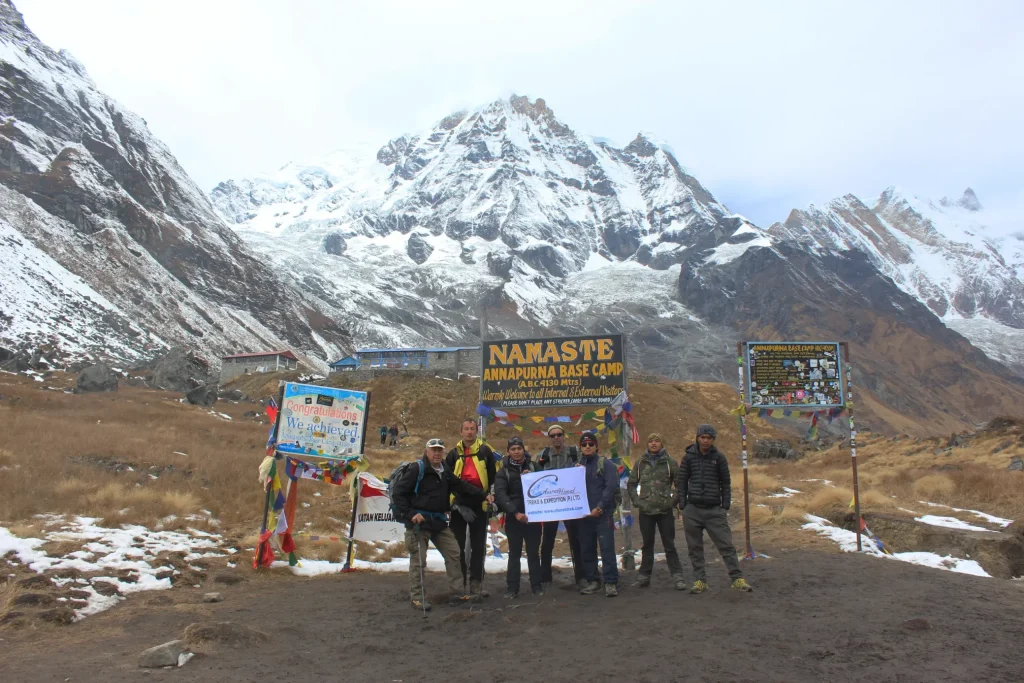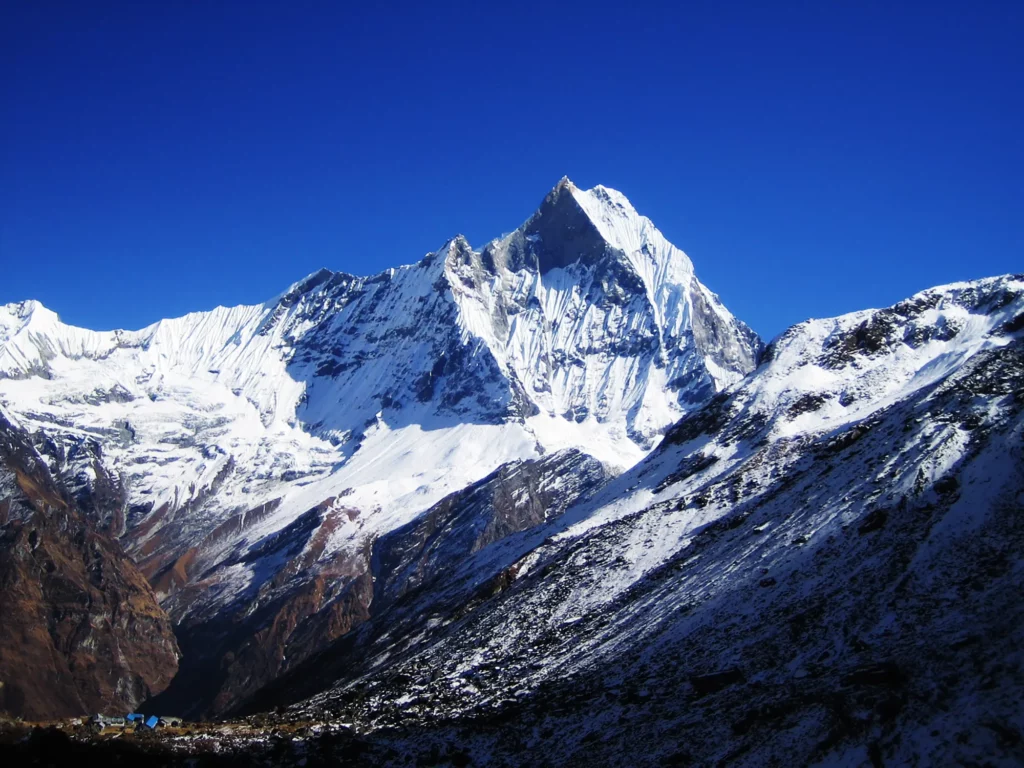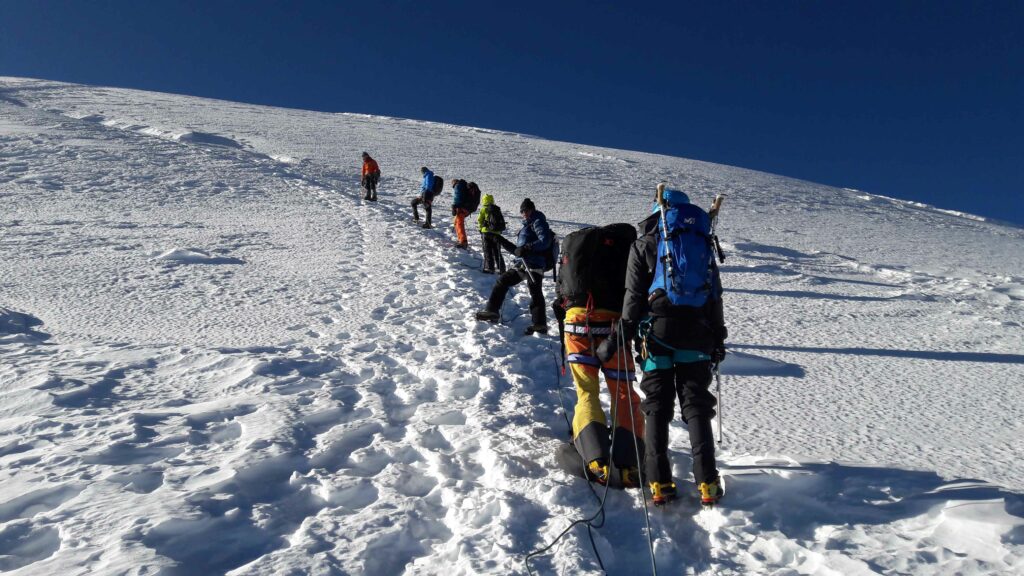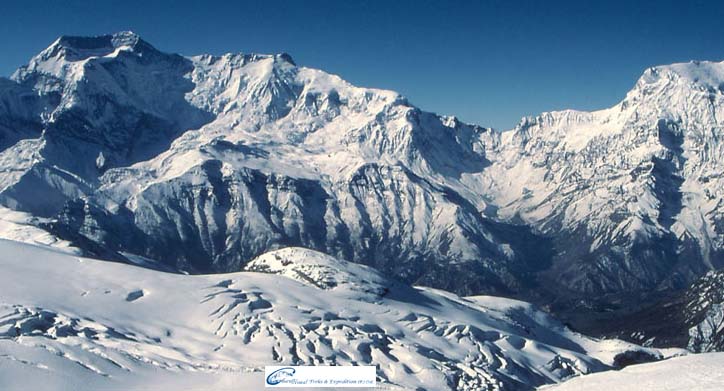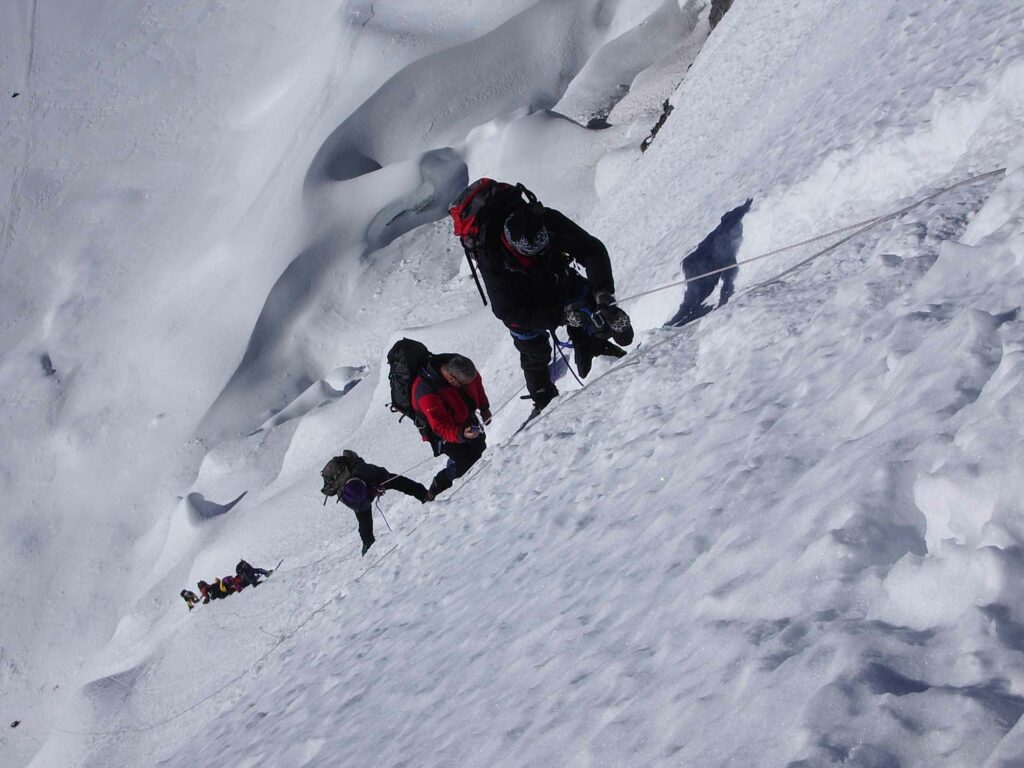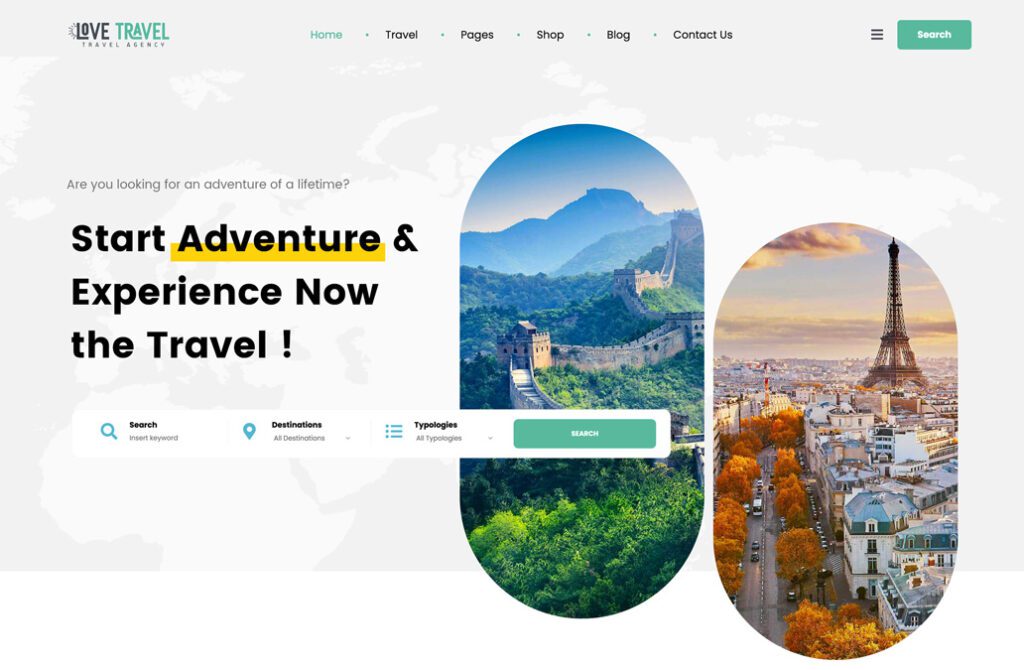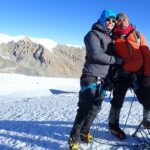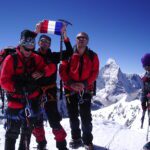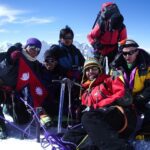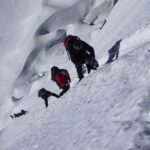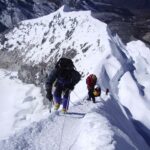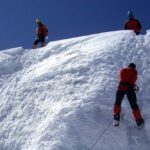Embark on the trek to Upper Mustang Trek
The Upper Mustang Trek is a 17-day adventure into Nepal’s ancient Himalayan kingdom. Starting in Kathmandu, explore cultural landmarks before flying to Pokhara and Jomsom, the gateway to Mustang. Trek through barren landscapes, deep gorges, and historic caves, reaching the walled city of Lo-Manthang at 3,840m. Discover centuries-old monasteries, Tibetan-influenced culture, and breathtaking desert-like scenery. This trek offers a unique blend of adventure and heritage, making it an unforgettable journey through Nepal’s last forbidden kingdom.
Some highlights of the Upper Mustang Trek:
It’s a journey to a piece of paradise; it’s a journey toward unexplored Himalayan beauty and ancient monasteries. Here are some reasons why the Upper Mustang Trek stands out:
1. Lo Manthang, the historic walled city that served as the royal capital of the Mustang Kingdom.
2. Kali Gandaki Gorge is one of the world's deepest gorges.
3. Chhoser Caves will take you back to prehistoric times.
4. The Tiji Festival, an ancient ritual that reflects a good demonstration of the triumph of goodness over evil.
5. Panoramic views of the Annapurna and Dhaulagiri ranges.
6. You will experience local interaction in different monasteries, festivals, and traditions.
7. Dramatic desert landscape, vibrant rock formations, and amazing windy cliffs.
8. Once-in-a-lifetime journey to travel through Nepal’s most remote and pristine region.
9. Trek through charming Tibetan villages like Kagbeni, Chele, and Syangboche.
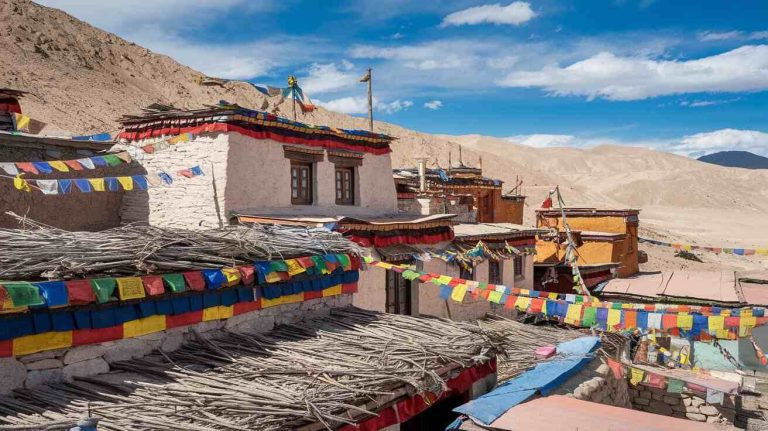
Unique Landscape and Culture of Upper Mustang
Geographical Features
The bleakly gorgeous terrain of Upper Mustang is more reminiscent of the Tibetan plateau than the verdant surroundings typically connected with Nepal.
The Upper Mustang region is characterized by arid, windswept cliffs and deep valleys.
Colorful canyons rock formations in shades of red, orange, and yellow.
Protected from monsoons by the Annapurna and Dhaulagiri ranges, offering a dry climate year-round.
Rich Cultural Heritage
The Upper Mustang region is deeply rooted in Tibetan influence. Key cultural elements include:
Monasteries like Ghar Gompa and Jampa Lhakhang.
The Tiji Festival is a vibrant celebration featuring masked dances and rituals.
People of Mustang are deeply connected to Tibetan Buddhism, reflected in their daily lives, art, and architecture.
What to Expect on Your Upper Mustang Trek with BlueMarble Adventures
1. Outlined Itinerary of the Upper Mustang Trek
BlueMarble Adventures provides a thoughtfully designed trek itinerary. Highlights include:
Day 1: Arrival in Kathmandu (1300m).
Day 2: Fly to Pokhara (820m).
Day 3: Fly to Jomsom and trek to Kagbeni (2,804m).
Day 4: Trek to Chele (3,050m).
Day 5: Trek to Syanbochen (3,800m).
Day 6: Trek to Ghemi(3,520m).
Day 7: Trek to Lo Manthang ( 3,840m).
Day 8: Explore Lo Manthang.
Day 9: Trek back to Drakmar (3,810m).
Day 10: Trek to Ghiling (3,806m).
Day 11: Trek to Chhuksang (2,980m).
Day 12: Trek back to Jomsom (2,720m).
Day 13: Fly to Pokhara and return to Kathmandu.
2. Expert Guidance
With a decade of experienced guides, you will move a step toward the Upper Mustang Trek. Our guides will ensure safety and offer deep information about the local culture, history, and pathways.
3. Supportive & Personalize Services
BlueMarble Advantages Prioritizes according to your comfort and will provide porters to accommodation arrangements with quality service. We set our group size into small groups for tailored experiences. Also, we provide the facility of itineraries to suit individual preferences.
Best Time to Trek to Upper Mustang
Upper Mustang can trek year-round, but out of year, here are some of the best sessions they are:
Spring (March-May): Wildflowers bloom, and the landscapes are vibrant.
Autumn (September-November): Perfect for photography.
Essential Preparation Tips
Fitness and Training
To build stamina with running and hiking, cardio exercise is preferred.
For better endurance and focus on leg strength training.
Prevention for altitude sickness training
Packing Checklist
1. Trekking boots and poles.
2. Layered clothing (thermal, fleece, windproof jackets).
3. Sleeping bag and backpack..
4. Sunglasses, sunscreen, and a first-aid kit.
Join Us on the Upper Mustang Trek!
Adventure awaits! Book your Upper Mustang Trek with BlueMarble Adventures. Let us guide you through Nepal’s Hidden Kingdom for an unforgettable experience.
Included / Excluded
To help you plan your trip, we have put together a list of what's included and what's not included in your tour package. This will give you a clear understanding of what to expect and help you make any necessary arrangements before your journey begins.
- Airport transfers
- Hotel accommodations in Kathmandu and Pokhara
- Meals during the trek
- TIMS card and permits
- Transportation for the trekking crew
- Guided sightseeing in Kathmandu
- Domestic flights.
- Trekking guide, assistant guide, and porters
- Medical and accident insurance
- Welcome dinner
- First aid kit
- Trekking map
- Nepal entry visa fee
- International airfare
- Entrance fees for sightseeing.
- Lunch and dinner in Kathmandu and Pokhara (except farewell dinner)
- Medical expenses.
- Personal expenses (phone calls, laundry, etc.)
- Personal trekking gear.
- Additional staff.
- Tips and gratitude.
- Extra charges due to natural calamities.
- Why us?
- Who are we?
- Our team
Detail Itinerary
We have carefully planned out each day to give you the best possible experience. From exploring historic landmarks to tasting delicious local cuisine, each day is packed with adventure and excitement. Join us as we take you on a journey through some of the most fascinating destinations in the world.
Land in Kathmandu Airport and get greeted by your team. Enjoy a traditional Nepalese welcome dinner.
Unveil the mysteries of the Kathmandu Valley, where history and culture intertwine. Explore ancient temples, hidden courtyards, and vibrant bazaars that hold the secrets of centuries.
Your day begins with a picturesque journey from Kathmandu to Pokhara, where the changing altitudes offer a variety of landscapes. You’ll arrive in Pokhara, a gateway to adventure, at approximately 800m.
Embark on a thrilling flight from Pokhara to Jomsom (altitude: 2720m). From Jomsom, your trek to Kagbeni (2800m) begins, leading you through a desert-like landscape, promising a unique adventure. Approximately 3 hours of trekking.
Today, your trek takes you from Kagbeni to Chaile, revealing the hidden treasures of the Mustang region. The journey unfolds at an elevation of around 3050m. Approximately 6 hours of trekking.
As the path unfolds from Chaile to Gheling, your footsteps take you deeper into the heart of Mustang’s cultural and natural treasures. The elevation rises to approximately 3700m. Approximately 5 hours of trekking.
This leg of your journey is a cultural kaleidoscope, and the elevation is about 3490m. The trek from Gheling to Ghami leads you to unique villages, allowing you to interact with friendly locals and explore the rich traditions of the region. Approximately 5 hours of trekking.
Your trek from Gheling to Tsarang, with a stopover at Dhakmar, unveils ancient monasteries. The journey, with an elevation of around 3700m, is marked by serenity and spirituality. The walking hours are dedicated to exploration and cultural enrichment. Approximately 5 hours of trekking.
Today’s trek, with an elevation of about 3810m, leads you to Lo Manthang, the ancient capital of Upper Mustang. The path takes you through a mystical realm where history and culture converge. The walking hours are designed to soak in the ambiance of this unique place. Approximately 5 hours of trekking.
Spend the day immersed in the rich tapestry of Lo Manthang. Explore monasteries, visit palaces, and be captivated by the genuine warmth of the locals. The walking hours may be flexible as you absorb the cultural and historical riches of this capital.
The trek from Lo Manthang to Yara takes you through remote villages, revealing unique cultures and traditions. Every step is a cultural revelation. The elevation hovers around 3550m, and the walking hours are planned to let you experience the heart of these villages. Approximately 6 hours of trekking.
Today, your adventure at an altitude of about 3550m is dedicated to a visit to Luri Gumba, an enigmatic cave monastery shrouded in mystery and architectural marvels. The visit might not involve extensive trekking, but it promises to be an awe-inspiring experience.
As you trek from Yara to Tange at an elevation of around 3500m, you’ll unveil the hidden beauty of the Mustang region. The rugged landscapes paint a stunning backdrop to your adventure, and the walking hours are adjusted to match the terrain and the need for exploration. Approximately 6 hours of trekking.
The trail from Tange to Tetang, at an elevation of approximately 3250m, is a 7-hour journey immersed in nature’s grandeur. Every step brings you closer to the raw beauty of this region, and the walking hours are designed to embrace the serenity of the natural world.
The trek from Tetang to Muktinath, situated at an elevation of about 3250m, takes you to a sacred oasis. Here, you’ll find solace and spirituality amidst the stunning Himalayan landscapes. The walking hours are adjusted to let you explore this holy site in peace.
As you trek from Muktinath to Jomsom, you’ll savor the grand finale of your adventure in the Mustang region. The day is marked by an elevation of around 2750m, a culmination of your remarkable journey. The walking hours are planned to enjoy the last stretch of this incredible trek. Approximately 5 hours of trekking.
Your homeward-bound journey is a dynamic blend of a scenic flight from Jomsom to Pokhara, followed by a bus ride to Kathmandu, offering a picturesque farewell to the Mustang region.
Enjoy a day of leisure in the vibrant city of Kathmandu, perfect for souvenir shopping, personal reflection, or perhaps exploring more hidden gems of the valley.
It’s time to say farewell to Nepal for this time, but your memories of the Upper Mustang Trek will forever stay with you. As you depart from Tribhuvan International Airport, you carry the spirit of the Mustang with you. The heights you’ve conquered, the cultural richness you’ve absorbed, and the walking hours you’ve trekked through have etched an unforgettable chapter in your travelogue.

